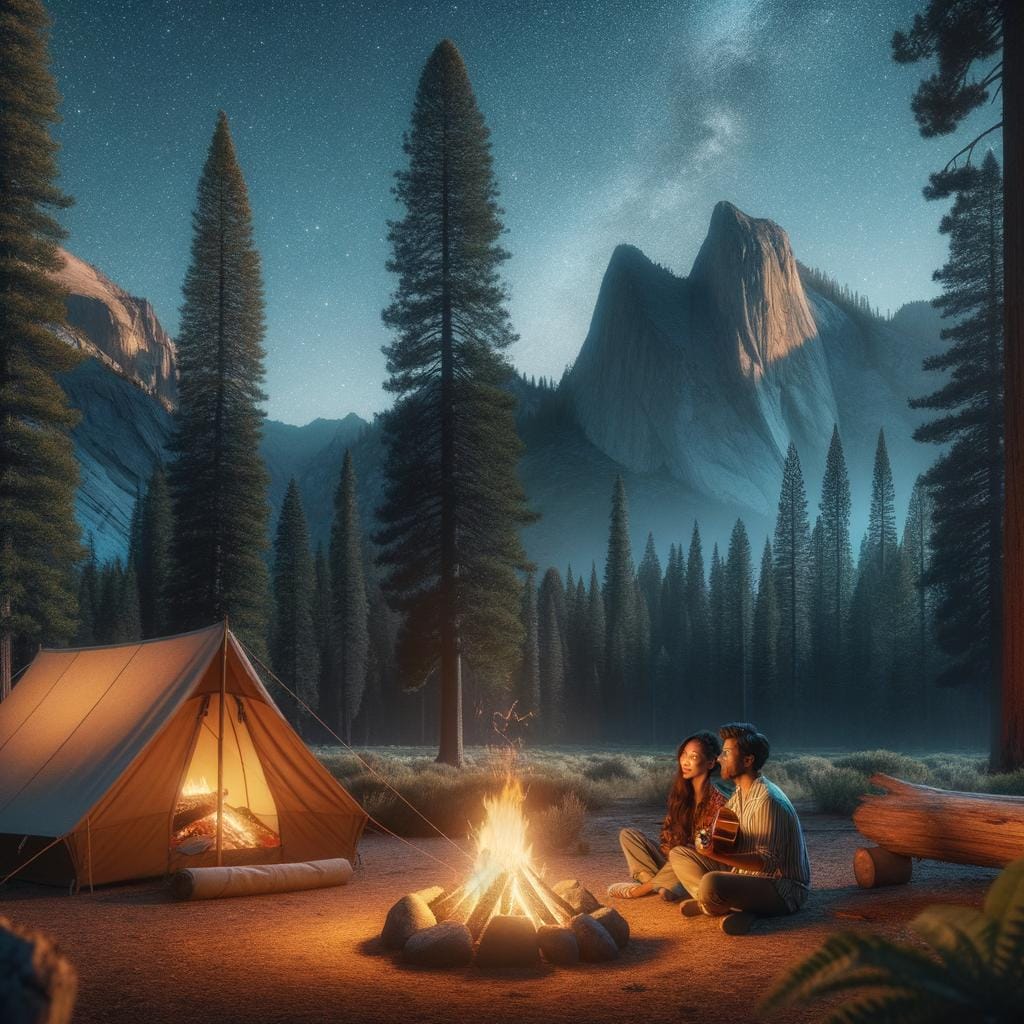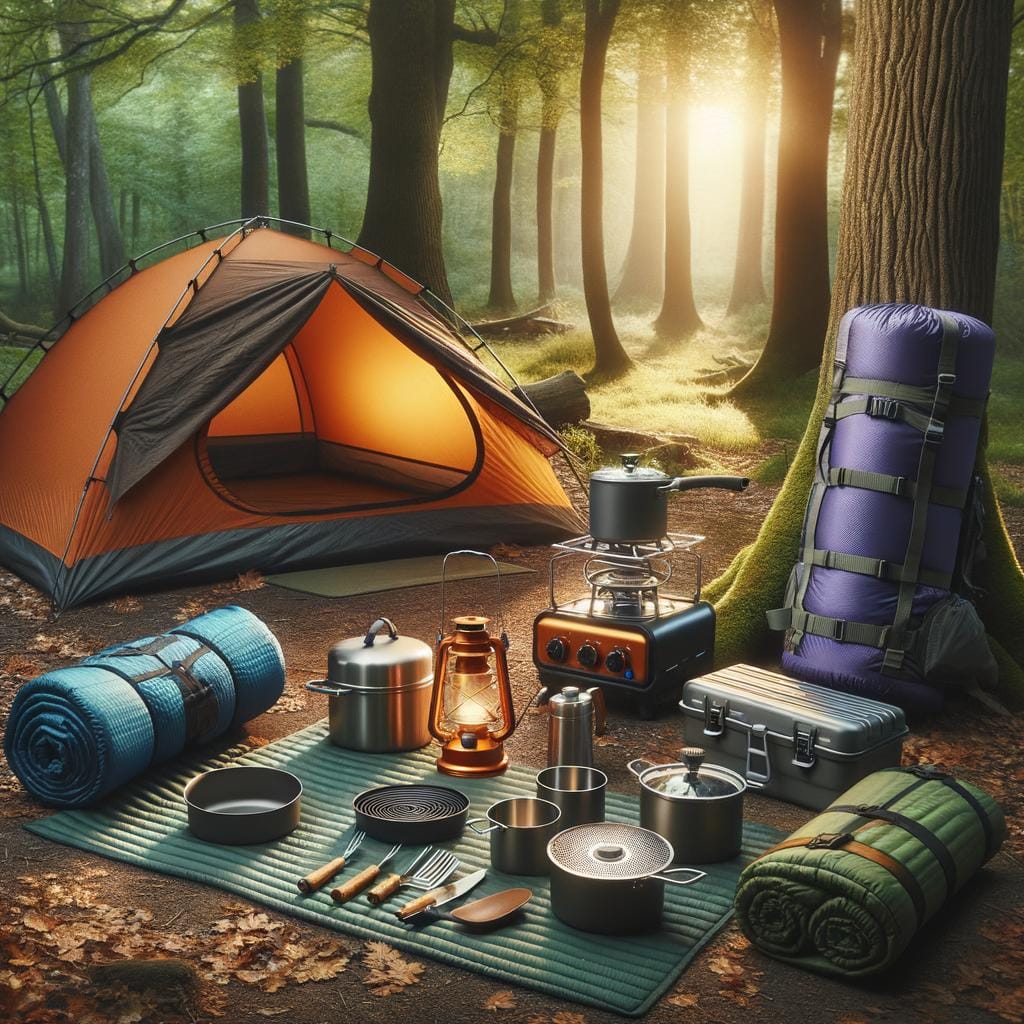Backcountry camping offers outdoor enthusiasts a unique opportunity to immerse themselves in nature and disconnect from the hustle and bustle of everyday life. It involves venturing into remote, undeveloped areas where campers can truly experience the wilderness in its purest form. This type of camping requires careful planning, essential gear, and a sense of adventure to fully enjoy the experience.
One of the primary draws of backcountry camping is the chance to escape crowded campgrounds and explore secluded landscapes that are untouched by modern conveniences. Whether hiking through rugged terrain or paddling across serene lakes, backcountry campers have the freedom to choose their own path and create unforgettable memories along the way. In this article, we will delve into the various aspects of backcountry camping, from essential gear and safety tips to meal planning and Leave No Trace principles.
From the thrill of setting up camp in a remote location to falling asleep under a blanket of stars, backcountry camping offers individuals a chance to reconnect with nature on a deeper level. Whether you’re a seasoned outdoors enthusiast or new to backpacking, embarking on a backcountry camping trip can be a rewarding and enriching experience. So grab your gear, pack your sense of adventure, and get ready to explore the great outdoors in a whole new way.
Benefits of Backcountry Camping
Backcountry camping offers a myriad of benefits for outdoor enthusiasts looking to escape the hustle and bustle of everyday life. One of the primary advantages of backcountry camping is the opportunity to disconnect from technology and immerse oneself in nature.
Without the distractions of modern life, campers can truly appreciate the natural beauty around them, whether it’s a breathtaking mountain vista or the soothing sounds of a babbling brook. This sense of tranquility and solitude is often hard to come by in more developed camping areas.
Physical and Mental Health Benefits
In addition to the mental benefits of being surrounded by nature, backcountry camping also provides numerous physical health benefits. Hiking to remote campsites, carrying heavy packs, and setting up tents all require physical exertion, making backcountry camping an excellent form of exercise. The fresh air and outdoor activities can also lead to improved sleep quality and overall mood.
Studies have shown that spending time in nature can lower stress levels, reduce anxiety, and even boost creativity. So, not only does backcountry camping provide a chance to unplug from daily stressors, but it can also improve both physical and mental well-being.
Connection With Nature
Furthermore, backcountry camping allows for a deeper connection with nature than traditional frontcountry camping. In more remote locations, campers are more likely to encounter wildlife in their natural habitats, witness stunning sunrises and sunsets, and experience true wilderness without the sights and sounds of nearby towns or campgrounds.
This sense of connectedness with the natural world can be incredibly rewarding and create lasting memories that may not be possible in more developed camping areas. Overall, the benefits of backcountry camping go beyond just physical health; they encompass mental rejuvenation, connection with nature, and unique experiences that can only be found off the beaten path.
Essential Gear and Supplies for Backcountry Camping
Backcountry camping is a thrilling and rewarding outdoor experience that allows adventurers to immerse themselves in nature and disconnect from the hustle and bustle of everyday life. Packing the right gear and supplies is essential to ensure a safe and enjoyable backcountry camping trip. When preparing for your expedition, it is important to prioritize lightweight and durable equipment that will withstand the rugged conditions of the wilderness.
One of the most important pieces of gear for backcountry camping is a reliable tent. Look for a lightweight, waterproof tent that is easy to set up and can withstand varying weather conditions. A sleeping bag rated for the expected temperatures at your camping location is also crucial to ensure a comfortable night’s sleep. Additionally, a sleeping pad will provide insulation from the cold ground and add an extra layer of comfort during rest times.
In addition to shelter and bedding, proper clothing is key to staying comfortable while backcountry camping. Choose moisture-wicking layers that can be easily added or removed depending on temperature changes throughout the day. It’s also important to pack appropriate footwear that provides support and traction on uneven terrain.
Other essential gear includes a backpack with enough capacity to carry all your supplies, a reliable water filtration system, a first aid kit, a portable stove for cooking meals, and navigation tools such as a map and compass or GPS device. Be sure to pack enough food for the duration of your trip, considering weight and nutritional content to sustain you during your outdoor adventures.
By having the right gear and supplies on hand, you can fully enjoy the beauty and serenity of backcountry camping while staying safe in nature’s rugged playground.
Planning Your Backcountry Camping Trip
When it comes to planning a backcountry camping trip, preparation is key. Before embarking on your adventure, take the time to carefully research and plan out every aspect of your trip. Start by selecting a destination that suits your experience level and desired level of seclusion. Consider factors such as distance, terrain, elevation gain, and potential hazards when choosing a backcountry camping location.
Next, create a detailed itinerary outlining your route, estimated travel time, and any points of interest along the way. Make sure to check for any necessary permits or regulations specific to your chosen backcountry camping area. Familiarize yourself with the local wildlife, weather patterns, and emergency contacts in case of unforeseen circumstances.
In addition to planning your route and obtaining necessary permits, it’s essential to pack the right gear and supplies for your backcountry camping trip. This includes items such as a durable tent, sleeping bag, cooking equipment, water purification supplies, navigation tools (map and compass or GPS), first aid kit, and appropriate clothing for variable weather conditions. Remember to pack lightweight but nutrient-dense food options for sustained energy during your trek.
| Backcountry Camping Essentials | Benefits |
|---|---|
| Tent | Allows you to disconnect from the stresses of daily life |
| Sleeping Bag | Offers opportunity for solitude and personal reflection |
| Cooking Equipment | Provides a sense of adventure and self-sufficiency |
Safety Tips for Backcountry Camping
Backcountry camping offers a unique and immersive outdoor experience for adventurers seeking to disconnect from the hustle and bustle of everyday life. However, with this level of seclusion comes an increased need for safety awareness and preparation. Whether you are a seasoned backcountry camper or a beginner looking to embark on your first backcountry expedition, following these essential safety tips can help ensure a successful and enjoyable trip:
1. Pack a reliable first aid kit: When venturing into the backcountry, it’s crucial to be prepared for any unexpected injuries or medical emergencies. A well-stocked first aid kit should include items such as adhesive bandages, antiseptic wipes, gauze pads, medical tape, pain relievers, tweezers, and any personal medications.
2. Stay informed about the terrain: Before heading out on your backcountry camping trip, take the time to research the area you will be exploring. Familiarize yourself with the topography, potential hazards, weather conditions, wildlife encounters, and any necessary permits or regulations. Additionally, having a detailed map and compass (or GPS device) can help prevent getting lost in unfamiliar surroundings.
3. Practice proper food storage: One of the key aspects of backcountry camping safety is preventing wildlife encounters by storing food properly. Invest in bear-resistant containers or hang food bags at least 100 feet away from your campsite and 10 feet off the ground. This not only protects you from potentially dangerous wildlife but also helps preserve the natural environment for future campers.
By taking the time to prioritize safety during your backcountry camping trip through these measures and more, you can enjoy all that nature has to offer while minimizing risks and ensuring a memorable outdoor adventure filled with stunning scenery and unforgettable experiences. Remember: preparation is key when heading into the wilderness for an extended period of time.
Choosing the Right Backcountry Camping Location
When it comes to backcountry camping, one of the most crucial decisions you’ll make is choosing the right location for your adventure. The location you select can greatly impact your overall experience, so it’s essential to consider a few key factors before setting out on your trip.
Remote vs. Popular Locations
One of the first considerations when choosing a backcountry camping location is whether you prefer a more remote or popular area. Remote locations offer seclusion and the chance to truly connect with nature without encountering many other campers. On the other hand, popular locations may provide more amenities such as established campsites and access to trails, but they can also be crowded during peak seasons.
Terrain and Activities
The terrain and activities available in a backcountry camping location should also influence your decision. Are you looking for challenging hikes through mountainous terrain, serene lakeside camping spots, or perhaps opportunities for birdwatching or fishing? Consider what activities you want to engage in and choose a location that aligns with your preferences.
Regulations and Permits
Before finalizing your backcountry camping location, be sure to check for any regulations or permit requirements in the area. Some wilderness areas have restrictions on where you can camp or limit the number of campers allowed at a time. By familiarizing yourself with these regulations beforehand, you can ensure a smooth and compliant camping experience in the backcountry.
Remember, selecting the right backcountry camping location plays a significant role in having an enjoyable and safe outdoor adventure. Whether you crave solitude in remote wilderness or seek the convenience of popular trails, taking the time to research and choose wisely will set the stage for a memorable experience in nature.
Meal Planning for Backcountry Camping
When preparing for a backcountry camping trip, one of the key aspects to consider is meal planning. Proper nutrition and sufficient energy are essential when engaging in outdoor activities, making it crucial to plan your meals thoughtfully. Here are some tips to help you prepare your meals for a successful backcountry camping experience:
- Consider lightweight and non-perishable food items that are easy to pack and carry. Opt for dehydrated or freeze-dried meals, nuts, jerky, energy bars, and instant meals that require minimal preparation.
- Plan your meals according to the duration of your trip and the number of people in your group. Make sure to include a balance of carbohydrates, proteins, and fats to keep you fueled throughout your adventure.
- Think about the cooking equipment you will need and choose versatile items such as a lightweight stove, pot, utensils, and fuel. Keep in mind that you will have limited resources to cook with in the backcountry, so simplicity is key.
Additionally, it’s important to practice proper food storage techniques when backcountry camping to prevent attracting wildlife. Use bear-proof containers or bear bags to store your food away from your campsite and follow all guidelines provided by the park or wilderness area you are visiting.
By carefully planning your meals and packing appropriate foods for your backcountry camping trip, you can ensure that you stay energized and nourished throughout your outdoor adventure. Remember to pack out all trash and food waste following Leave No Trace principles to minimize your impact on the environment while enjoying nature’s beauty.
Leave No Trace Principles for Backcountry Camping
When engaging in backcountry camping, it is imperative to adhere to the Leave No Trace principles to minimize your impact on the environment and preserve the wilderness for future generations. These principles are guidelines that promote responsible outdoor practices and help ensure the sustainability of our natural resources. One of the core tenets of Leave No Trace is to leave the backcountry as you found it, or even better.
To follow these principles effectively, campers should strive to pack out all trash, including food scraps and packaging materials. It is essential to properly dispose of waste by carrying out all litter and leaving no evidence of human presence behind. Additionally, campers should use designated campsites when available and avoid expanding existing sites or creating new ones. By concentrating impact in established areas, you can help protect fragile ecosystems from unnecessary damage.
In order to further reduce your ecological footprint while backcountry camping, it is crucial to practice proper hygiene habits. This includes using biodegradable soap at least 200 feet away from any water source when washing dishes or yourself.
Furthermore, campers should respect wildlife by observing animals from a safe distance and refraining from feeding them. By implementing the Leave No Trace principles during your backcountry camping trips, you contribute to the conservation of our natural landscapes and promote a more sustainable outdoor experience.
| Leave No Trace Principle | Description |
|---|---|
| Plan Ahead and Prepare | Thoroughly research your trip, assess regulations and weather conditions |
| Travel and Camp on Durable Surfaces | Avoid trampling vegetation by staying on designated paths or durable surfaces |
| Dispose of Waste Properly | Pack out all trash and waste; use cat holes for human waste disposal |
Backcountry Camping vs Frontcountry Camping
When it comes to choosing between backcountry camping and frontcountry camping, understanding the key differences can help you make an informed decision on which type of camping experience best suits your preferences and needs.
One significant difference between backcountry camping and frontcountry camping is the level of accessibility. Frontcountry campgrounds are typically easily accessible by car, with designated campsites, amenities like restrooms and picnic tables, and sometimes even running water and electricity. On the other hand, backcountry camping involves hiking or backpacking into remote wilderness areas where there are no facilities or services readily available.
Another key difference is the level of solitude and immersion in nature. Backcountry camping allows for a more secluded experience, away from crowds and civilization. In contrast, frontcountry campgrounds are often more popular and can get crowded during peak seasons, leading to a different kind of camping atmosphere.
Additionally, backcountry camping requires a higher level of self-sufficiency and outdoor skills compared to frontcountry camping. With limited access to resources, backcountry campers must be prepared to handle unexpected challenges such as inclement weather, wildlife encounters, or injuries. Proper trip planning, navigation skills, knowledge of Leave No Trace principles, and proficiency in using essential gear are crucial for a successful backcountry camping trip.
Personal Experiences and Tips for Successful Backcountry Camping
Backcountry camping offers a unique and rewarding experience for outdoor enthusiasts looking to immerse themselves in nature and disconnect from the hustle and bustle of everyday life. While it may require more preparation and gear than traditional frontcountry camping, the benefits are well worth the extra effort. From breathtaking views to solitude and self-reliance, backcountry camping allows individuals to truly appreciate the beauty of the great outdoors.
One of the key advantages of backcountry camping is the opportunity to escape the crowds and noise commonly found at established campgrounds. By venturing off the beaten path, campers can find peace and tranquility in remote locations surrounded by nature’s splendor. Additionally, backcountry camping provides a sense of self-sufficiency and independence as individuals must rely on their own skills and resources to navigate the wilderness.
To ensure a successful backcountry camping trip, proper planning and preparation are essential. Researching your chosen location, packing all necessary gear and supplies, practicing leave no trace principles, and adhering to safety tips are crucial steps in guaranteeing a smooth and enjoyable experience.
Whether you’re a seasoned backpacker or new to backcountry camping, taking the time to carefully plan your trip will ultimately lead to unforgettable memories in some of nature’s most pristine landscapes. So grab your gear, lace up your hiking boots, and embark on an adventure into the wild with backcountry camping – where every step taken leads to a deeper connection with nature.
Frequently Asked Questions
What Is Backcountry Camping?
Backcountry camping refers to camping in remote, undeveloped areas away from established campgrounds or facilities. It often involves hiking or backpacking to reach the chosen campsite, providing a more secluded and immersive outdoor experience.
Where Can I Backcountry Camp in Virginia?
Virginia offers several options for backcountry camping, including Shenandoah National Park, George Washington and Jefferson National Forests, and various state parks such as Grayson Highlands State Park. These destinations provide opportunities for hikers and outdoor enthusiasts to explore nature in a more primitive setting.
Is Backcountry Camping Allowed in Yellowstone?
Backcountry camping is allowed in designated areas of Yellowstone National Park. Backpackers can obtain permits to stay at one of the park’s backcountry campsites, allowing them to experience the wilderness and solitude that Yellowstone has to offer. It is important for visitors to follow the park’s regulations and Leave No Trace principles while backcountry camping in Yellowstone.

An avid outdoor enthusiast, writer, and environmental advocate who has spent over two decades exploring the world’s most breathtaking landscapes. With a background in environmental science and a passion for adventure, Frances combines her love for nature with her talent for storytelling to inspire others to embark on their own outdoor journeys.





